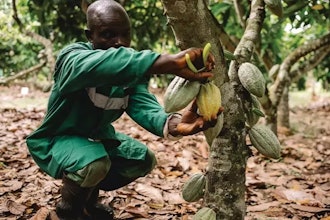
Manufacturers have several options to bring new food ingredients to market: food additive petitions (FAP), generally recognized as safe (GRAS) notifications to the U.S. Food and Drug Administration (FDA), and independent conclusions of GRAS status. In this conversation with Sam Jockel and Benjamin Wolf — two senior associates at international law firm Alston & Bird — we address common questions about marketing food ingredients based on a GRAS conclusion.
Food Manufacturing: What is GRAS and what is required to reach this status?
Jockel & Wolf: The Federal Food, Drug and Cosmetic Act defines a food additive as “any substance the intended use of which results or may reasonably be expected to result, directly or indirectly, in its becoming a component or otherwise affecting the characteristics of any food …, if such substance is not generally recognized … to be safe under the conditions of its intended use.” A food may be GRAS based on use in food in the U.S. before January 1, 1958 or based on recognition, “among experts qualified by scientific training and experience to evaluate its safety,” supported by information that is “generally available” or “generally accepted,” i.e., the information must be published in a journal or have other similar availability. The submission may be strengthened by the inclusion of the conclusion of a panel of independent experts (a GRAS panel).
Making a conclusion that a particular ingredient is GRAS, and therefore not subject to FDA pre-market approval, requires a factual determination based on the date of introduction into food in the United States or the safety of the use of the ingredient at the levels anticipated.
Food Manufacturing: When creating a food product with a new substance, the burden to reach a GRAS conclusion is on the food manufacturer. What are the pathways for reaching a GRAS conclusion?
Jockel & Wolf: There are two pathways for reaching a GRAS conclusion: (1) the submission of a GRAS notification to the FDA; or (2) compiling information to make an independent conclusion that the intended use of a particular food substance is GRAS. The FDA has provided guidance on the format for a GRAS notification, and it has suggested independent GRAS conclusions be drafted using the same format as a GRAS notification so that the FDA can more easily review the conclusion should it desire.
A manufacturer is able to immediately market the food ingredient once reaching an independent GRAS conclusion. In contrast, if a GRAS notification to the FDA is utilized, the manufacturer may not market the ingredient until the FDA acknowledges the notification via a “no questions” letter.
Food Manufacturing: How long can food manufacturers expect the process to take if they file a GRAS notification with the FDA?
Jockel & Wolf: The FDA will conduct an initial evaluation upon receipt of the GRAS notification and will decide to either file the notification and inform the notifier of the filing date or send the notifier a letter explaining the agency’s reasons for not filing the GRAS notification. Once filed, the FDA will respond to a GRAS notification within 180 days but may extend its response time by 90 days. In reality and despite these time limits, the FDA has historically taken more time—up to a year—to respond to a GRAS notification.
Food Manufacturing: What are the benefits of obtaining an independent GRAS conclusion? And what are the challenges?
Jockel & Wolf: Unlike a GRAS notification to the FDA, which can take over a year for the FDA to review, a manufacturer may immediately market the food ingredient once reaching an independent GRAS conclusion. Further, because GRAS notifications are publicly available, marketing via independent GRAS determination will prevent other companies from utilizing the GRAS determination to market their own ingredients. However, unlike a “no questions” letter in response to a GRAS notification where the FDA has indicated it has reviewed the notification and has no questions, an independent GRAS conclusion receives no such agency review. Some customers may require FDA review in part because of the variability in the level of robustness in independent GRAS conclusions within the food industry.
Though not a concern for individual manufacturers, some have expressed concerns that the wide use of independent GRAS conclusions results in insufficient transparency in the food supply because the FDA neither reviews nor is informed about the expected use of a substance that undergoes an independent GRAS conclusion.
Food Manufacturing: How would a food manufacturer know if the substance it is using is GRAS and can be used in the food supply?
Jockel & Wolf: The FDA has published the lists of substances it has already concluded or otherwise affirmed as GRAS. These lists, found in 21 C.F.R. Parts 182, 184, and 186, impose use levels and specify the functional role the ingredient must serve in the finished food to rely on the listing. The FDA’s regulations acknowledge that many substances that are GRAS are not explicitly listed in the regulations. This is particularly true for the many food ingredients of natural origin that were widely consumed before 1958. The FDA also publishes on its website an inventory of its responses to GRAS notices filed since 1998 that can also be reviewed to determine whether the FDA has issued a “no questions” letter for the use of a particular substance. If not the subject of a regulatory listing or a “no questions” letter, manufacturers should also consult with the supplier of the substance for documentation related to an independent GRAS conclusion.
Food Manufacturing: Is a GRAS conclusion always necessary to bring a food product to market?
Jockel & Wolf: No. A food product may be brought to market with a successful FAP. Additionally, the definition of “food additive” also enumerates other exclusions: pesticide chemical residue in or on a raw agricultural commodity or processed food, a pesticide chemical, a color additive, prior sanctioned substances, new animal drugs, and dietary ingredients used in a dietary supplement. So the inclusion of, for instance, a new color additive will require a separate approval (in this case, a color additive petition).
Food Manufacturing: Have there been any changes to the FDA’s GRAS process due to the COVID-19 pandemic? Is the process more time-consuming because of any pandemic-related limitations?
Jockel & Wolf: The FDA’s basic process for the submission and review of a GRAS notification has not been changed by the COVID-19 pandemic. As GRAS conclusions require published data, any delays in publication of studies may result in subsequent delays in a GRAS determination. There may also be delays in FDA review of GRAS notifications due to shifts in FDA staffing to more nimbly address the COVID-19 pandemic.
Food Manufacturing: What is your advice for a food manufacturer that must secure a GRAS conclusion for the first time?
Jockel & Wolf: Documenting a GRAS conclusion for a particular food ingredient is a highly technical process that is benefited by the involvement of those experienced in assessing ingredients and reaching GRAS conclusions. On the technical side, it is critical to accurately assess expected consumption levels and to  Jockel
Jockel
Reaching a GRAS conclusion is an effective way to bring new food ingredients to market. It is a factual inquiry that requires nuance and experience. Companies  Wolf
Wolf
Sam Jockel is a senior associate in Alston & Bird’s Litigation & Trial Practice Group and a member of the Food, Drug & Device/FDA Team. Sam focuses his practice on regulatory, policy, and litigation matters involving food, beverages, cosmetics, dietary supplements, and drugs.
Benjamin Wolf is a senior associate in Alston & Bird’s Health Care Group and a member of the Food, Drug & Device/FDA Team counseling clients in many industries regulated by the Food and Drug Administration (FDA).























